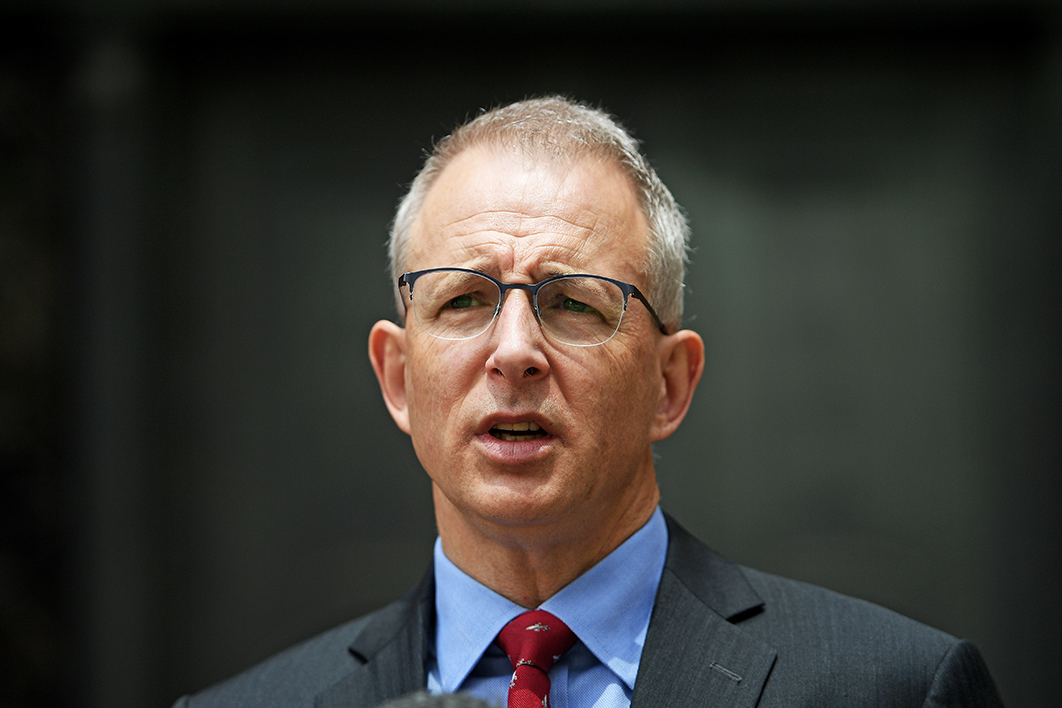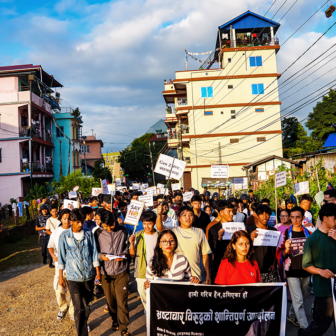Incoming communications minister Paul Fletcher has told industry newsletter Communications Day that he “will not restart the stalled spectrum reform process until he is satisfied that the proposed new regime will provide superior benefits to the system it replaces.”
One of Fletcher’s predecessors in the portfolio, Malcolm Turnbull, announced the review of Australia’s spectrum policy and management framework way back in May 2014. In 2015, a departmental report found there were “substantial deficiencies” with Australia’s twenty-year-old regime, which was described as “slow, rigid and administratively cumbersome.” Two years later, an exposure draft of a new Radiocommunications Bill was released.
Then things more or less ground to a halt. A major reform process, in an area of government policy usually notable for a high level of political bipartisanship, was apparently stuck in limbo. Does that matter? And what is wrong with the current laws anyway?
Radiofrequency spectrum is sometimes called a “key enabler” of the digital economy — the medium that enables everything to connect with everything else. And the emergence of machine-to-machine connectivity and the Internet of Things, or IoT, means that it is only going to get more important. These developments are often conflated with 5G wireless broadband — a PR coup for the traditional telecommunications industry given that the IoT is already evolving apace using other (terrestrial and satellite) technologies. That’s not to deny the importance of 5G: mobile carriers and governments worldwide are getting behind 5G in a spirit of “if you build it, they will come,” promising eye-watering bandwidth, low latency and the ability to focus “beams” of broadband connectivity at moving as well as fixed objects, even if applications that will fully exploit its unique features are still scarce.
Australia needs an effective and trusted “town planning” regime for our radiofrequency spectrum if we are to maximise its overall public benefit. How spectrum is planned and licensed will determine how soon and how cheaply we can enjoy the benefits of new technologies like 5G. A well-run regime should be as open as possible to opportunities in key overseas markets, and give spectrum users the confidence and incentive to invest in those technologies locally. At the same time, it needs to respect the huge diversity of legacy spectrum uses. Some of these, such as scientific research and public safety, can’t be reduced to a dollar value or expected to compete for spectrum in an open market.
On these criteria, Australia’s current regime is not generally considered to be broken. To quote Minister Fletcher again, “I think it’s important to start from a premise that in the broad, we’ve got a system that has served us reasonably well.”
Far-sighted reforms in the 1990s ensured we benefited early, and continue to benefit, from two emerging licensing models that have since become standard worldwide. The most durable and flexible was “class licensing,” which allows whole classes of transmitters or receivers to be authorised at a single stroke. Chances are you are surrounded by class-licensed devices right now — whether it’s the wi-fi in the device you are reading this on, the set-top box on your television or the car keys in your pocket. And it’s not just for little things. In a world of ever-smarter technologies, class licensing is emerging as a way to authorise any device that doesn’t need the interference protection conferred by costly individual licences.
The second 1990s reform was “spectrum licensing.” These licences grant secure, long-term, fully tradeable property rights over large blocks of spectrum, with highly flexible conditions of use. In January, the Australian Communications and Media Authority, or ACMA, completed an auction of spectrum licences at 3.6 GHz that raised over $834 million, almost all of it from mobile carriers wanting spectrum for 5G services. While this licence type has not become as ubiquitous as reformers originally hoped, the widespread and timely clearance and licensing of key bands has made a large but hidden contribution to Australia’s highly competitive mobile broadband market.
Meanwhile, the more traditional “apparatus licences,” still in use for many spectrum applications, remain very useful for accommodating innovation. They are easier to create, allocate and vary than spectrum licences and can take many more forms. Typically more customised and affordable than spectrum licences, they often authorise a particular service and no more, allowing different uses to share a single band. Apparatus licences support weather radars, satellite earth stations, broadcasting transmitters, police radios and much else besides.
Yet there was and is an excellent case for reviewing spectrum management in Australia, and it can be boiled down to this: spectrum legislation was substantially written in the 1990s, and while it has served us well, good spectrum management is only going to grow more important and challenging. It makes economic sense to review the law and make sure it is optimised for the next twenty years.
If that’s the case for review, then it’s worth trying to identify exactly what is wrong with the elderly Radiocommunications Act 1992. Is this a reno or a knock-down job?
Persistent criticisms of Australia’s spectrum management regime include: too little certainty for existing licensees; slow, clunky and inflexible processes; unwarranted special treatment for broadcasters; and alleged bias towards maximising revenues from auctioning spectrum licences. To this, the regulator would probably add that some of its own regulatory powers and functions no longer reflect changing supply chains and ways of doing business.
The most persistent complaint from industry is uncertainty. High-value spectrum licences confer strong property rights, but the law provides no assurance about what becomes of the spectrum after the licence term expires.
The architects of the 1990s legislation expected that licences would be re-auctioned unless there were compelling grounds to the contrary. The major mobile carriers — pointing to their huge subscriber bases that depend on ongoing services — would prefer to keep the spectrum in perpetuity. With the 700 MHz spectrum licences alone selling for $3.5 billion, the stakes are high. The last Labor government tackled this through a drawn-out “public interest” process that extracted top dollar from the mobile carriers to roll over a number of their existing licences without the uncertainty of going to auction. The present government is not bound to follow this path and the whole issue can be expected to flare up again quite soon, as a new set of licences approach their expiry dates.
For holders of cheaper, customised apparatus licences, the fear is that spectrum licence-conversion processes will commence at short notice and price them out of their current bands, without fair compensation, as mobile broadband services colonise more and more spectrum bands internationally. This is an issue that tends to unite non-telecommunications spectrum users, as current law confers fewer rights and shorter terms on apparatus licences than on spectrum licences.
While it is questionable how much this uncertainty has actually reduced investment in radiocommunications, redesigned laws could, for example, allow for clarification of end-of-term arrangements for future spectrum licensees and give licence holders longer guaranteed access to their channels, where appropriate.
To the extent they hold any water, other industry complaints — that the system is biased towards mobile telecommunications and that spectrum is too expensive — don’t require legislative solutions.
From the perspective of a government keen to withdraw the minister into a policy and strategic role and leave day-to-day administration to the regulator, the chief irritant has been the incredibly clunky process for “reallocating” or “converting” blocks of spectrum to fully tradeable spectrum licences. Designed when spectrum licences were new and scary, it requires either a price-based allocation (typically an auction) or the “conversion” of an existing apparatus licence that happens to cover the same part of the spectrum — but only after a lengthy ping-pong game of formal ACMA recommendations and ministerial declarations. Political pressure, particularly from carriers, for more spectrum to feed soaring demand for wireless data has led to an unhealthy focus on how to speed up the bureaucratic ping-pong game, risking the rushed development of technically complex and legally sensitive instruments and the pre-emption of public consultation processes.
Current legal processes could undoubtedly be simplified and the respective roles of the minister and the spectrum and competition regulators better distinguished.
Another criticism of current law is the exceptional treatment of free-to-air broadcasting. Here, the law has evolved separately because of the unique role of broadcasting in a democracy. To safeguard them from political pressure from governments, broadcasters’ licences are in effect perpetual and regulated more at arm’s length from the minister. They are not tradeable the way other licences are, and resuming and reallocating the bands broadcasters use is much more complex and difficult than for other frequencies.
Ending these special arrangements was a key recommendation of the department’s 2015 review paper. It proposed “normalisation” of broadcaster spectrum access arrangements, subject to a guarantee of ongoing access to spectrum. The government has since tackled one major anomaly, by changing the way commercial broadcasters are taxed. They used to pay a special tax on their gross earnings as broadcasters, set to reflect the value that came from limits on the number of licences in any market. Now they pay a smaller annual tax on their apparatus licences, intended to reflect the value of the spectrum.
From the regulator’s perspective, online trading has revolutionised modern equipment supply chains, leaving ACMA’s powers and remedies behind in some areas. Its compliance and enforcement powers are overly reliant on criminal offences and might benefit from more civil remedies and better information-gathering powers.
So — should we renovate what we have, or knock it down and start again? The 2015 departmental report recommended replacing the current legislative framework. The centrepiece of the new Radiocommunications Bill released in May 2017 was a single licensing system to replace spectrum and apparatus licences. Class licences were also to be replaced, but by something similar: in effect, class licences by another name. The exposure draft was also incomplete. Future arrangements for free-to-air broadcasters were still under development, as were vital details about how transition might take place.
Passing a whole new act to replace the existing three licence types with two, more flexible new licence types would be an extremely expensive way to free the government and ACMA to fix some genuine shortcomings with the current regime. Replacing all apparatus and spectrum licences is expected to take five years from passage of the new law. The job would be huge even if no serious reforms were attempted in parallel. Most of the tens of thousands of affected licence holders would receive no clear pay-off, and the qualified support for the new legislation from industry to date — mainly from the mobile carriers — may evaporate altogether if the regulator were forced to redirect significant resources away from its day-to-day work. This includes ACMA’s ambitious agenda of band re-planning to support 5G wireless broadband and other new technologies.
After more than twenty years, Australia’s once-visionary spectrum-regulation arrangements are showing their age. With the increasing importance of wireless communications, updating them should yield long-term benefits. Almost from its outset, however, the spectrum review has focused on just one option: that of knocking everything down and starting again. How much of the policy pay-off from an entirely new licensing system could be achieved, more quickly and cheaply, by modifying rather than abolishing the three existing licence categories? By opening the door to these kinds of questions, this latest pause in the process may not spell the end of valuable reform, but actually make it more likely. •




